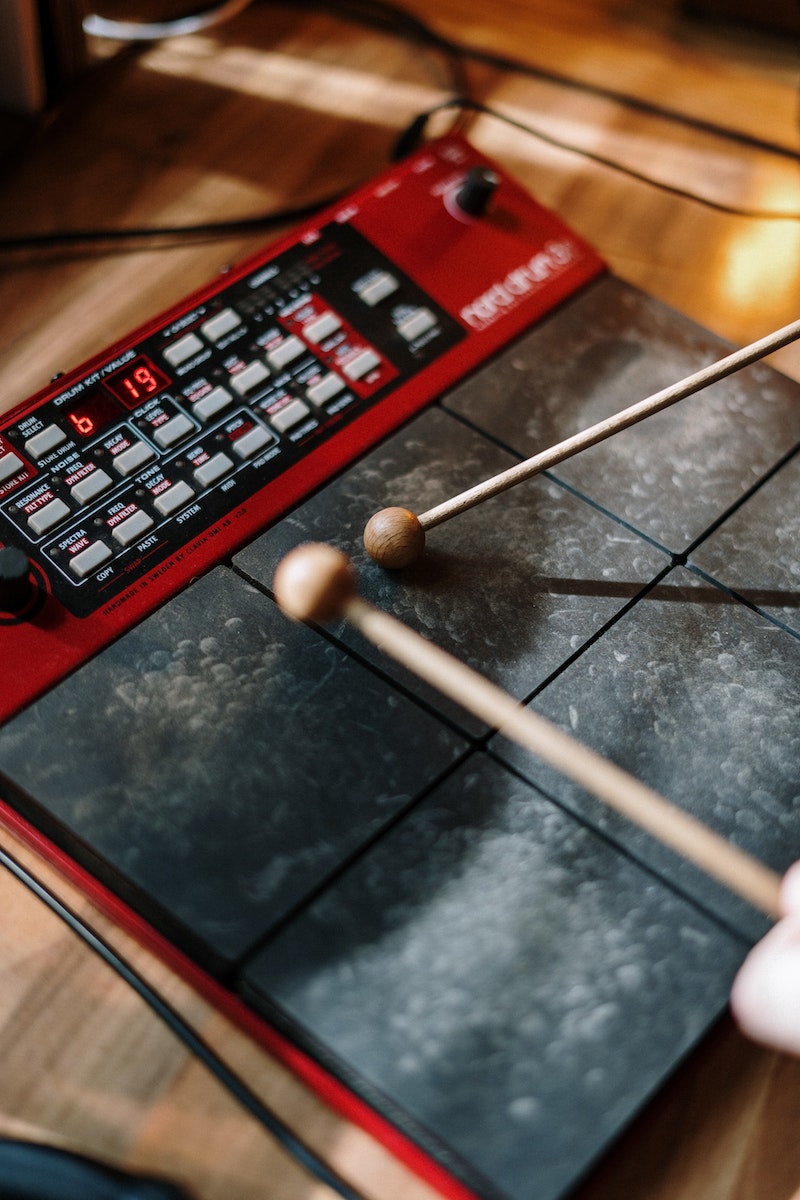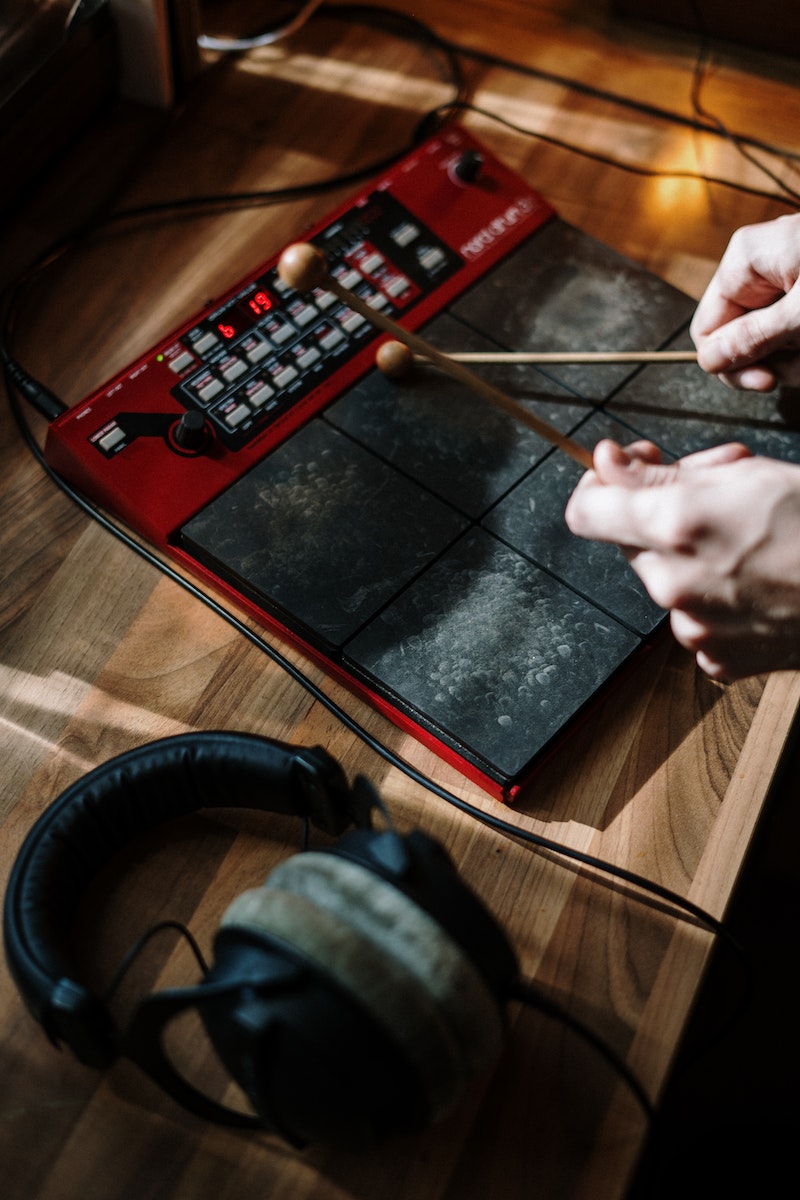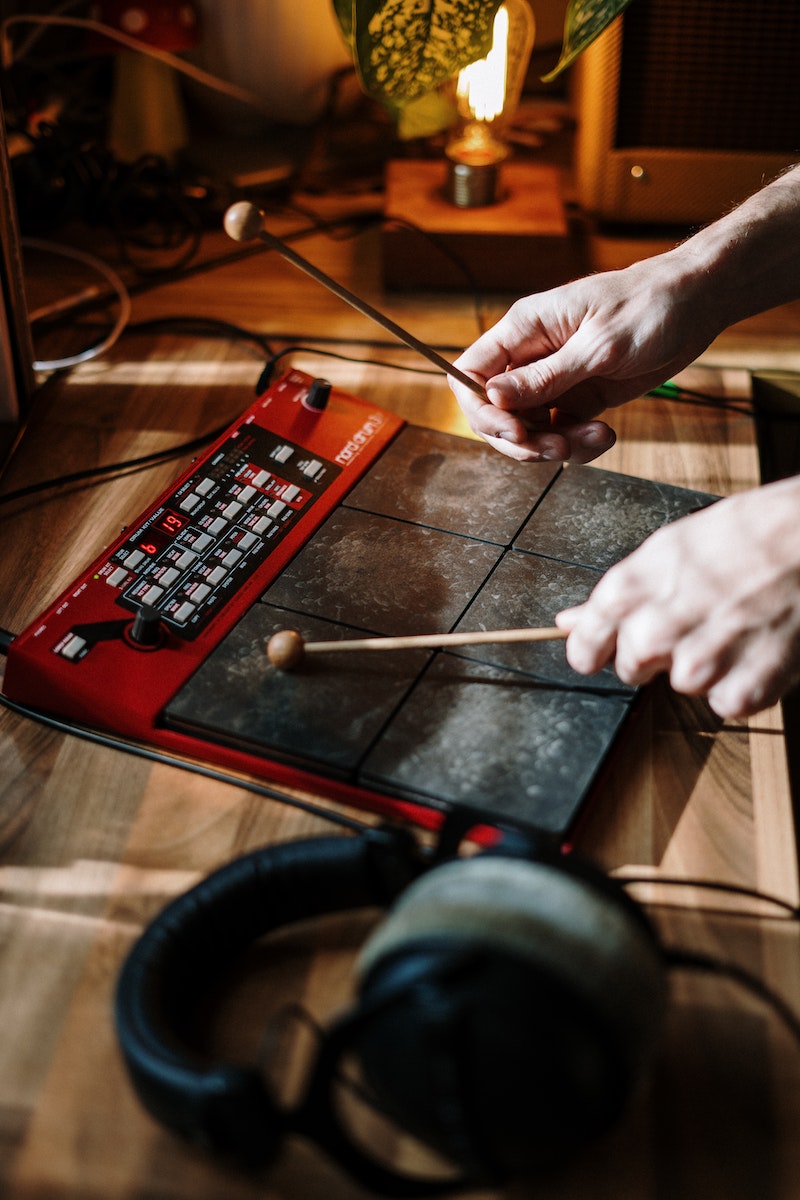
An electronic percussion pad is an electronic musical instrument that allows users to trigger pre-programmed or user-defined sounds through the use of touch-sensitive pads. These pads are often made of rubber and are laid out in a grid pattern similar to that of a traditional drum kit.
Technically, electronic percussion pads use a combination of touch sensors and electronic circuitry to detect when a pad is struck by a user and then produce a corresponding sound or sample. Most electronic percussion pads also offer a variety of additional features, such as the ability to adjust the volume, tone, and other sound parameters, and the ability to record and loop performances.
Sound module
In terms of sound module, similar to electronic drum sets and keyboards, there are two different sound generation technologies that can be used in a percussion pad. Here is an explanation of the differences between the two:
- Sample-based sound module: A sample-based sound module uses pre-recorded audio samples to produce sounds. These samples are typically recordings of real-world instruments or sounds that are then mapped to different pads on the percussion pad. When the user strikes a pad, the sample corresponding to that pad is played back. Sample-based sound modules can produce realistic, natural sounds that are faithful to the original source, but they are limited by the number and quality of the samples available.
- Synth-based sound module: A synth-based sound module, on the other hand, uses electronic synthesis techniques to generate sounds in real-time. Synth-based sound modules can create a wide range of sounds that may not be possible with sample-based systems. Synths can create complex and evolving sounds with the use of oscillators, filters, and envelopes. Synth-based sound modules are not limited to pre-recorded sounds, but rather generate sounds in real-time based on the user’s input. This makes them more versatile than sample-based modules, but they may not sound as realistic as sample-based systems.
In terms of percussion pads, sample-based sound modules are often used for drum and percussion sounds, while synth-based sound modules are used for more electronic and experimental sounds. Some percussion pads may include both sample-based and synth-based sound modules, allowing users to switch between different types of sounds depending on their needs.

Difference with finger drum pad
A electronic percussion pad and finger drum pad are similar in that they are both electronic musical instruments that allow users to trigger pre-programmed or user-defined sounds through the use of touch-sensitive pads. However, there are some key differences between the two.
A electronic percussion pad typically includes a larger number of pads arranged in a grid pattern, which allows for more complex and varied rhythms and sounds to be created. They also typically offer more advanced features, such as the ability to adjust the sound parameters and record and loop performances.
A finger drum pad, on the other hand, typically features a smaller number of pads arranged in a compact layout that can be played with just the fingers. Finger drum pads are often designed to be portable and easy to use, making them a popular choice for musicians who want to create beats and rhythms on the go.
While both electronic percussion pads and finger drum pads can be used for electronic music production and live performance, they may be better suited for different types of musicians or different types of musical applications. Electronic percussion pads may be more suitable for musicians who want to create complex and varied rhythms, while finger drum pads may be more suitable for musicians who want a more portable and accessible instrument for creating simple beats and loops.

Where electronic percussion pads commonly used
Electronic percussion pads are commonly used in electronic music production and live performances, particularly in genres such as hip-hop, electronic dance music (EDM), and experimental music. They are also used in traditional drumming settings, particularly by percussionists looking to expand their sound palette or create more complex rhythmic patterns.
Some examples of musicians who might use an electronic percussion pad include producers, DJs, drummers, percussionists, and electronic musicians. Digital percussion pads can be used in a variety of settings, including live performances, studio recording, and home music production.
Electronic percussion pads are particularly useful for musicians who want to add dynamic and unique sounds to their performances or recordings. They are also useful for musicians who want to create complex rhythmic patterns or incorporate electronic sounds into their music.
In conclusion, electronic drum pads are versatile and portable instruments that allow drummers and percussionists to create a wide range of sounds and styles. With the ability to trigger various sound sources, including built-in sounds, samples, and virtual instruments, they are a popular choice for musicians of all levels.
If you’re thinking about buying an electronic drum pad, there are a few things to consider:
- Pad quality: Look for a pad that is responsive and feels comfortable to play. Some pads may have better sensitivity or bounce than others.
- Sound quality: Consider the sound quality of the built-in sounds or the ability to load your own samples or sounds. Make sure the sounds match your playing style and the music you want to create.
- Connectivity: Consider the type of connectivity options the drum pad has, such as USB, MIDI, or audio outputs, to ensure it can work with your other instruments or recording setup.
- Features: Look for additional features that may be important to you, such as built-in effects, editing capabilities, or the ability to customize the pad layout.










































































































